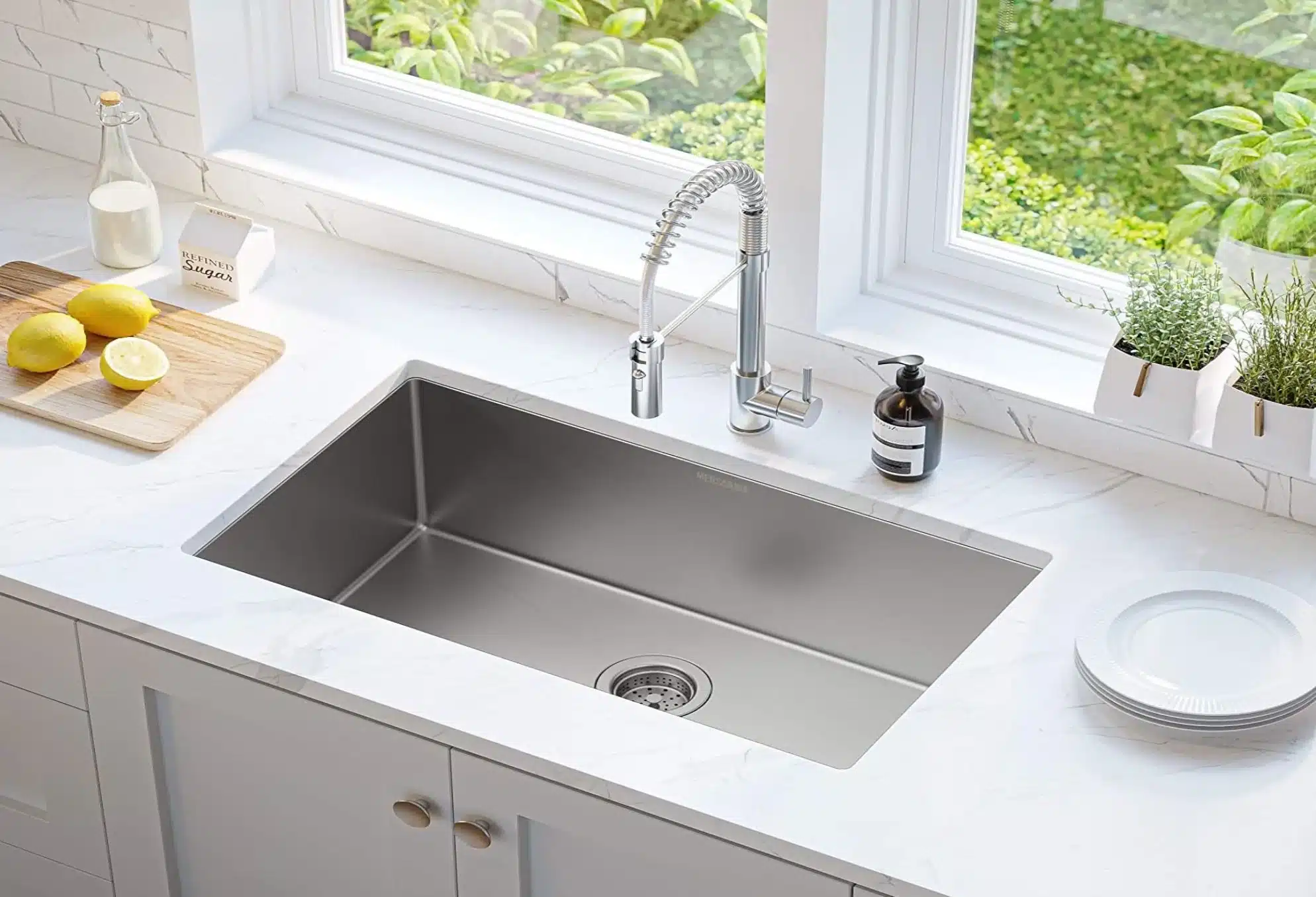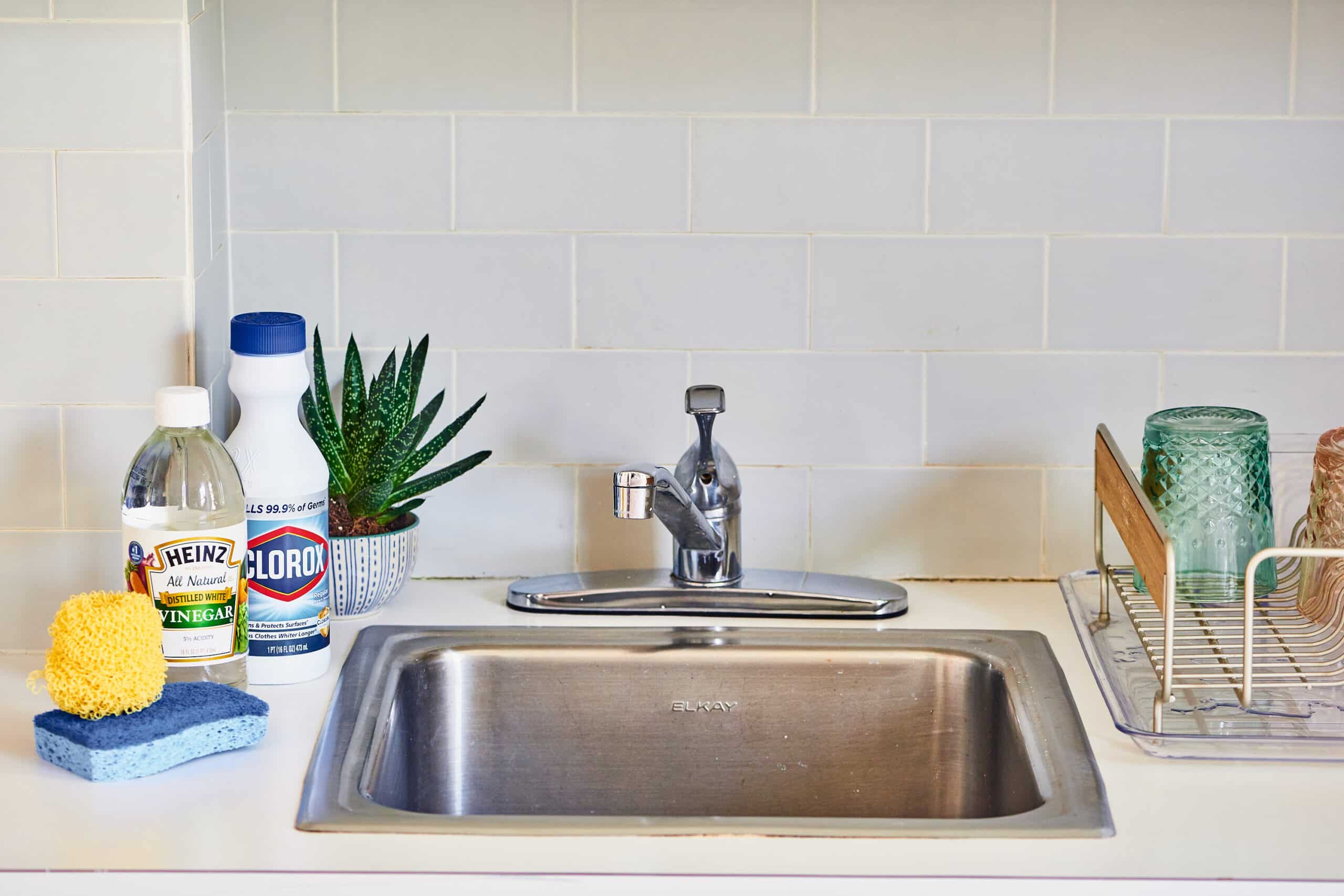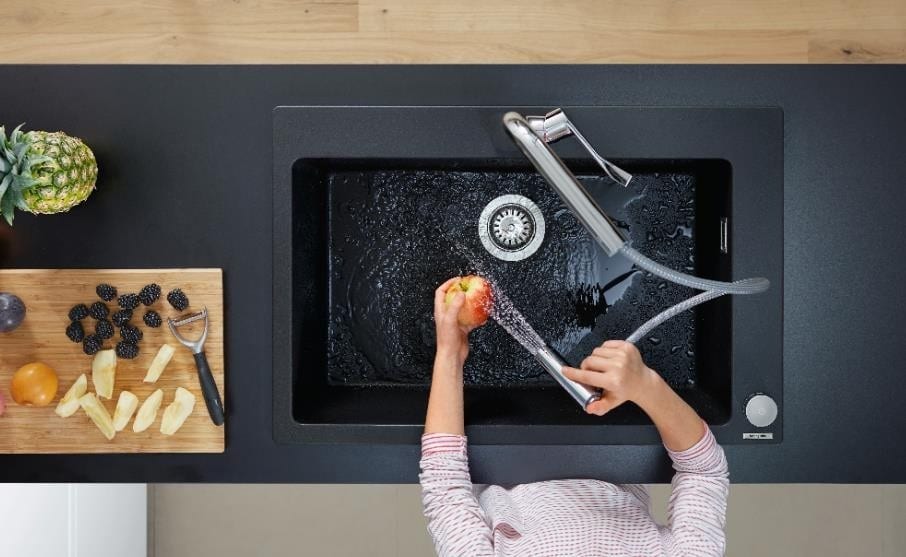You spend a lot of time at your kitchen sink, washing dishes, and making sure that everything is in order. But how frequently do you give the sink a thorough scrub? Deep cleaning of the kitchen requires time, effort, and a few helpful tips and hacks.
Tips to Clean your Kitchen Sink
The kitchen sink is a breeding ground for bacteria and germs that flourish in a moist, warm environment. So if you don’t clean it regularly, you run the danger of contaminating the dishes you’re washing with bacteria. It might make your family sick. That is especially true when a combination of oil and dirt can make cleaning a daunting task. Less than 70% of the U.S. population regularly cleans their kitchen. Which is not a good sign when it comes to healthy living. Here are some tricks that will help you make it look great and keep your kitchen safe.
Prevent Steel from Staining with a Good Scrub
Stainless steel is more resistant to stains than other sink materials, such as porcelain. Stainless steel is also less likely to stain or rust, but it is not stain-proof. Acidic or bleach-based cleaners can leave permanent stains on the kitchen sink, so if you want to keep it looking great, use baking soda instead of chemicals or bleach products. to clean your kitchen sink.
-
The Paste Method
A combination of baking soda and water turns into a paste that removes various stains from a stainless-steel sink. Make sure to rub them gently, rather than vigorously for the best results. If the stain is too stubborn to be removed, repeat the procedure, rubbing the baking soda with a soft bristle scrub brush or an old toothbrush.
-
Powders and Solutions
Stainless steel can get extremely dirty over time, especially if it is left without a deep clean, which can cause surface discoloration or corrosion. When this happens, clean the surface using commercially available solutions or hydrocarbon solvents. To remove stubborn stains, try using a fine abrasive powder, but use caution on polished surfaces. Another alternative is to use a sodium bicarbonate solution made of baking soda mixed with warm water.
-
Spray
You can also pour some vinegar and water into a spray bottle and use it to polish your stainless-steel sink until it shines. Acetic acid, which is included in white vinegar, is a natural disinfectant that is very efficient against many bacteria and germs. You can use a combination of hot water and antibacterial soap to clean surfaces without harming them.
How to Keep a Stainless White Kitchen Sink
Rust and food splatters and coffee and wine stains are visible on a white kitchen sink. To help remove stains and return your sink to its natural form, use hydrogen peroxide and baking soda. First, dampen the sink with a moist towel, then sprinkle baking soda over the basin until it’s completely coated. Scrub with a sponge or brush after adding a few drops of hydrogen peroxide to the baking soda. Wash the liquid down the drain after it has been properly cleaned.
Keep Your Porcelain Sink Squeaky Clean
Similar to white sinks, glossy porcelain sinks may be damaged by corrosion and discoloration. A porcelain sink may be cleaned in the same way as a white sink, but removing rust will need a different process to preserve the sink’s pearly sheen.
To remove rust, sprinkle salt over a lemon half and massage it immediately on the rust until the elements have done their job. Then, clean it in a sink full of hot, soapy water and dry it with a microfiber towel.
Leave Your Faucets and Taps Sparkling Clean
No matter the material, soapy water may be used to clean any faucet handles and the taps n your kitchen sink. To clean them, use a sponge or a brush, and a toothbrush to scrub the areas that are particularly difficult to access. If after scrubbing, you still see white spots, the cause of these is likely limescale, which is caused by the minerals in your water supply. If you add a teaspoon of vinegar to the soapy water combination and give it one more scrape and you can solve this problem easily.

Clean Your Disposal and Drain With Natural Ingredients
Baking Soda
Baking soda and vinegar are two simple ingredients that may be used to quickly and effectively clear the drain in your kitchen sink. The combination treats more than unpleasant odors; it is also a tried-and-true way of clearing clogged drains.
Keep in mind that you should use one part baking soda and two parts white vinegar; a ratio of 1:2. First, pour the baking soda down the drain, followed by the white vinegar in a slow, steady stream. After waiting 15 minutes for the bubbling pair to do its work, flush the drain with boiling water to remove any residue.
Lemon and Salt
Place a couple of lemon slices, a pinch of salt, and ice cubes inside your waste disposal. After that, as you continue to run the cold water, turn on your garbage disposal and let it run until all of the ice has melted. Where ice helps wipe off any filth and dirt, salt washes the blades to remove any buildup. The greatest results may be achieved with coarse salt, so if you only have access to various options, make it rock salt or sea salt. Naturally, the lemon is used to eliminate odors and provide a clean and invigorating scent.
White Vinegar
If you want to disinfect and clean your kitchen sink and drain naturally, the best way is to use white vinegar. Dip a sponge in vinegar and scrub away at difficult water stains. Afterward, wash it with warm water and pat dry to make sure no moisture is left behind.
However, vinegar is not the best disinfectant, especially if you need it deep clean. Ideally, a disinfectant should kill the most harmful bacteria and germs. While it may be an excellent all-purpose cleaner, vinegar is unlikely to kill all the germs that can clog your disposal, kitchen drain, and sink.
-
Pairing Vinegar with Other Powerful Agents
The best disinfectants are those registered by the EPA. But it’s not necessary to purchase expensive products for your sink. Just pair vinegar up with other natural cleaners if you want non-toxic cleaning solutions. White wine vinegar and bicarbonate of soda are great choices. The combination of lemon, vinegar, and baking soda will work together, breaking down clogs and leaving pipes free of blockage and fresh-smelling.
Another way to use vinegar is to mix it with water. A 1:1 ratio of vinegar to water works best, and it will dissolve grease, too. Mix the two, then spray the sink with the mixture and wipe it off with a cloth. You can even use vinegar to scrub your faucet! Once you’ve got this trick down, pat! You’ll be glad you did!

The Magic of Boiling Water!
After rinsing out the sink, pour boiling water down the drain to clear any clogs. Be sure to pour the water into a slow stream. After the water has cooled, run the sink to test the drain again. However, do not use boiling water on PVC pipes as it will soften and damage them. Before you try this method, ensure that the clog in your sink is not caused by your garbage disposal. If so, you can run it to break up anything that’s stuck inside.
Chemical Cleaners
If you want to use chemical cleaners, make sure to check your pipes. Chemical cleaners are harmful to plumbing and can eat through them in some cases or, they can leave behind dangerous sludge. To prevent this from happening, you should use a method that uses household products and elbow grease to clean up clogs. This method is less abrasive than chemical cleaners and can save you a lot of money.
Plumber Clog
Aside from using a drain snake, you should also try a liquid plumber clog destroyer and pipe guard. This is a thick gel designed to cut through standing water and dissolve stubborn clogs. The solution also prevents future clogs and eliminates foul odors. As long as you use a product made with PVC or copper, it can be used safely around your pipes.
Remove Hard Water Stains
Hard water in your sink often causes deposits to be left behind on the surface, which is called scale, and can appear as powdery white or rusty spots. It happens because water evaporates from the surface and leaves behind minerals. Over time, these minerals build up and become much harder to remove. Hard water buildups can clog plumbing lines and are especially hard on your dishwasher and disposal. You should take the necessary steps to prevent them from affecting your fixtures and plumbing system.
Stainless Steel Sinks
For stainless steel sinks, a simple solution is to use hot, boiling water to clean them. Then, use a scrub brush to remove the stains. Be sure to wear rubber gloves when cleaning these surfaces with chemical liquids and cleaners, as well as a mask to keep from inhaling any toxic fumes. There are thousands of cleaning solvents on the market, so contact the manufacturer for the proper application instructions.
Glass Surfaces
If you have hard water stains on glass surfaces, you can soak paper towels in vinegar. You can then paste them on the affected area and remove them after a few minutes. The acidic nature of vinegar will break down the minerals in hard water stains and clean your kitchen sink.

Conclusion
With the help of the various housekeeping and cleaning supplies we provide, you can keep your home healthier and cleaner. MyCleaningAngel provides both household cleaning services and our professional cleaning tips to make your home cleaner and healthier for you and your family. You can even book cleaning services online, it’s easy and fast.







